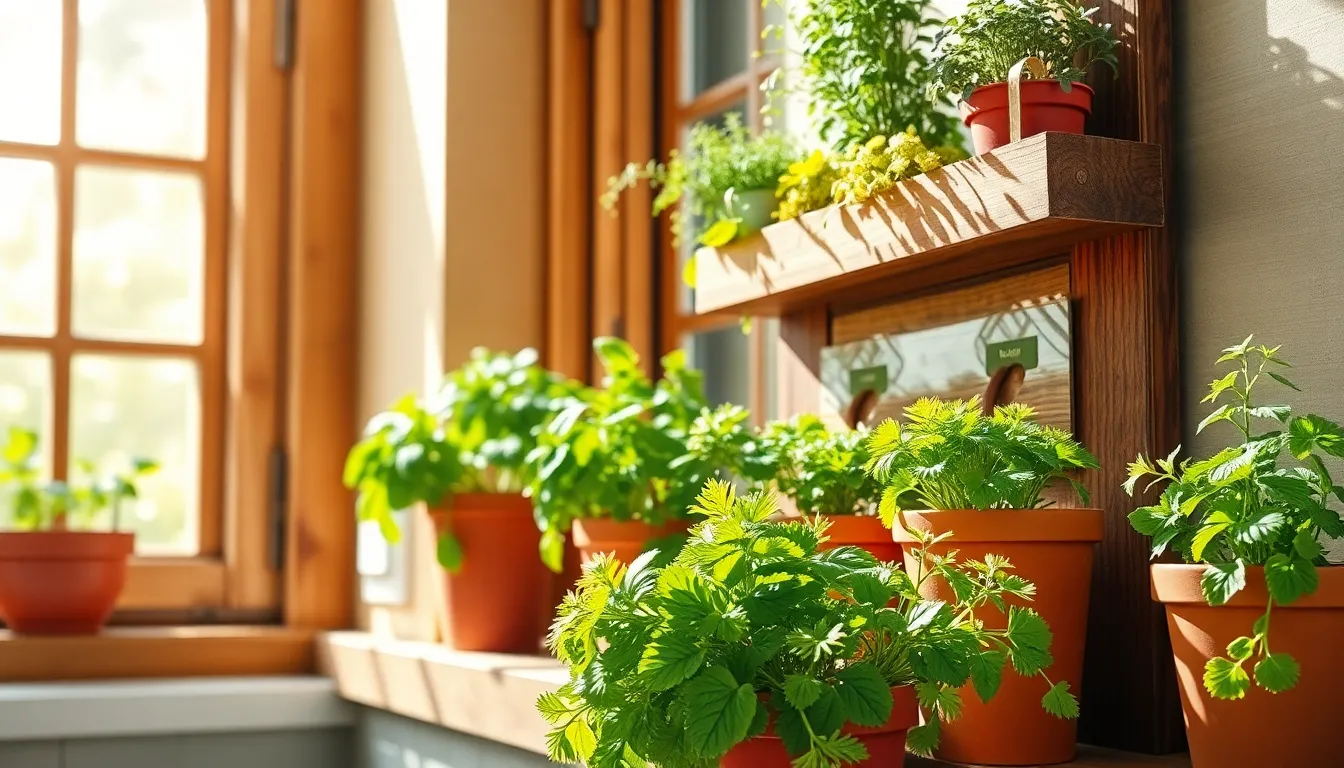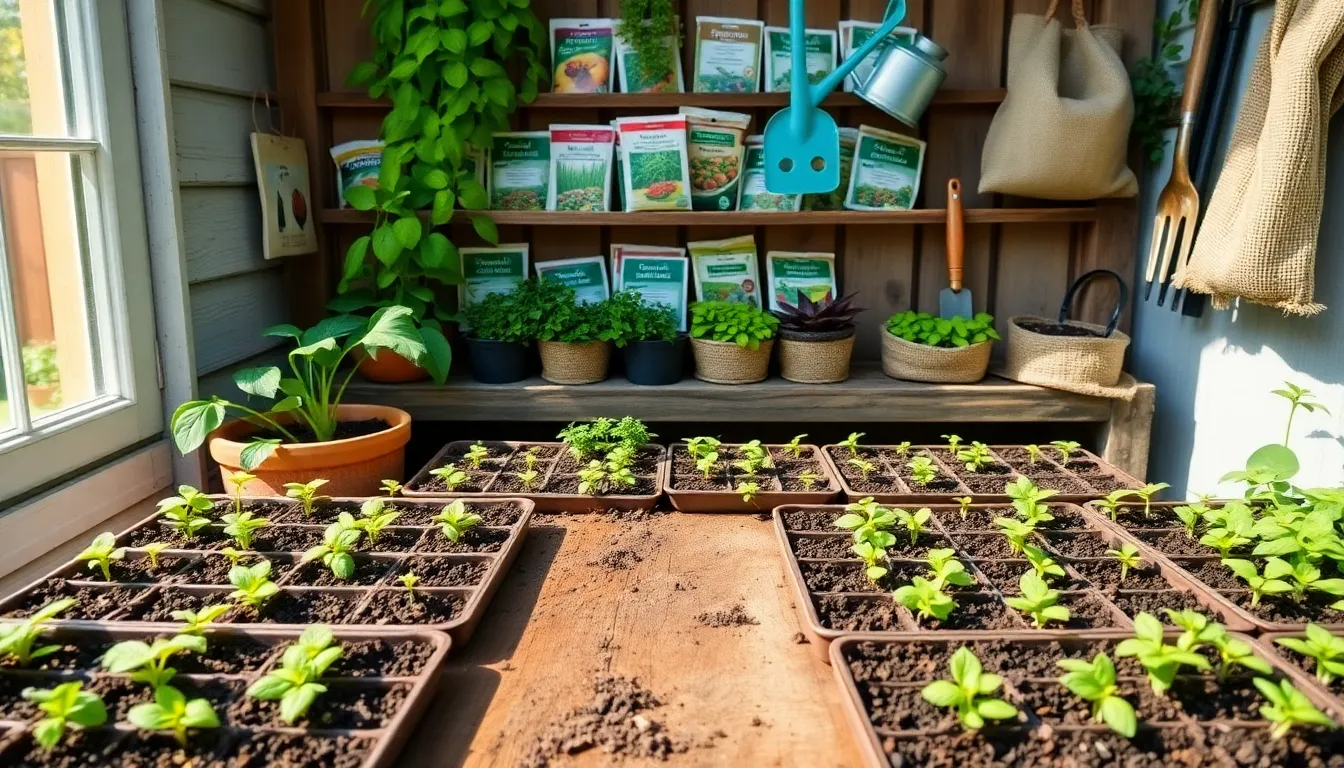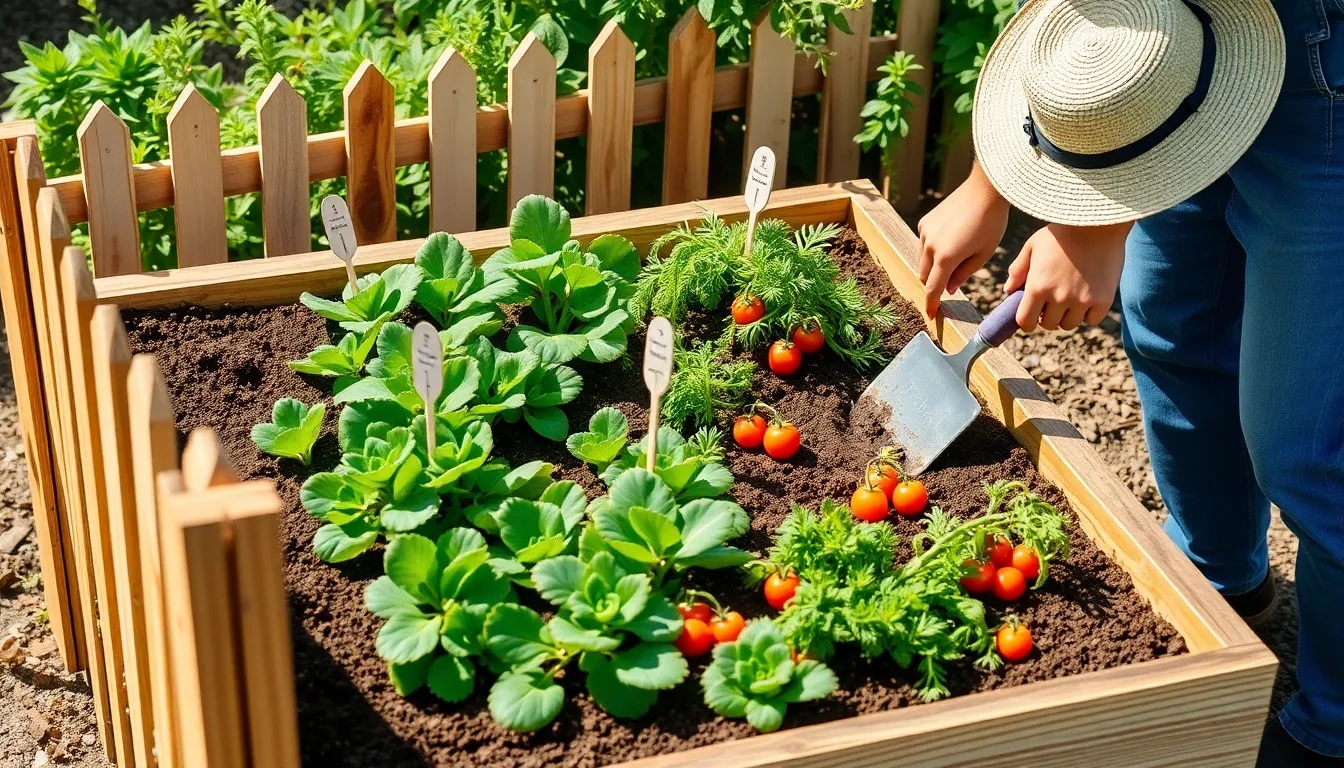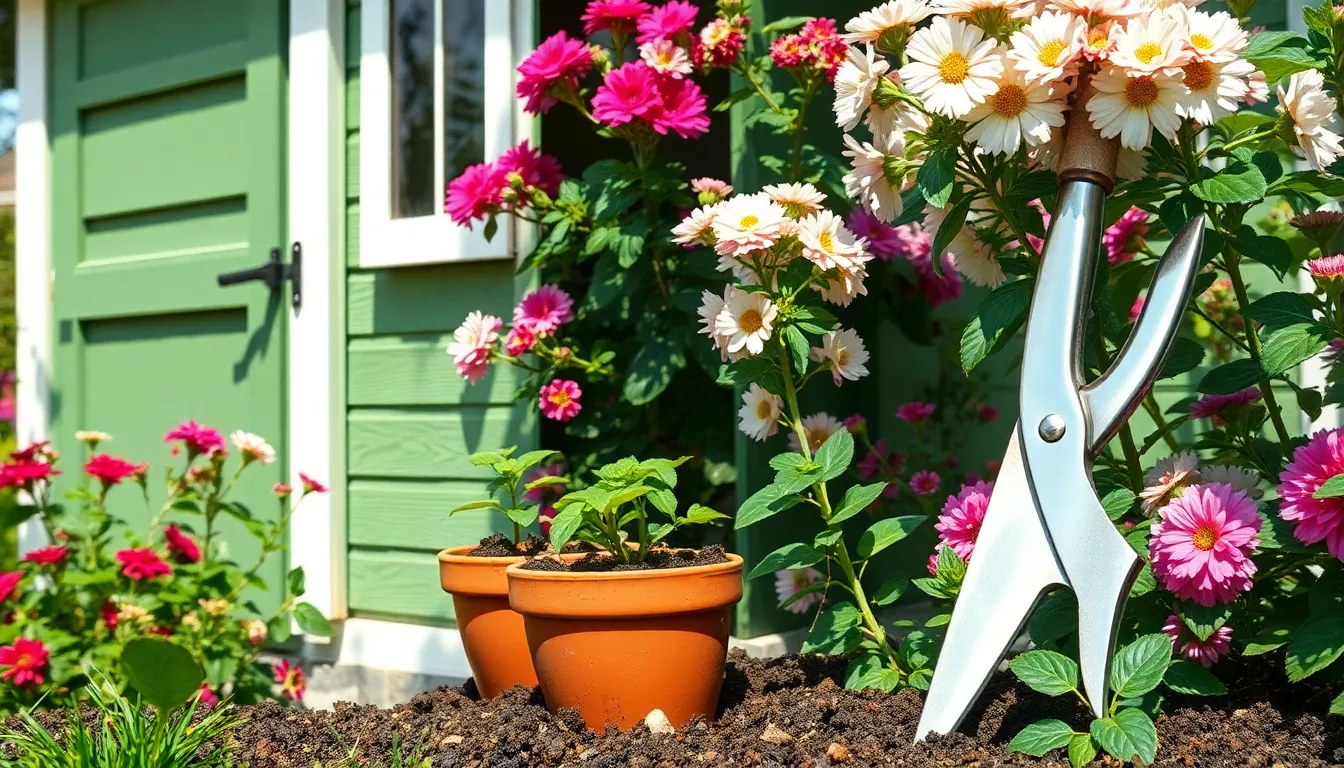Imagine the delight of plucking a fresh sprig of basil or a handful of fragrant mint, right from your own kitchen, as you prepare a meal. Growing an herb garden indoors is not just a hobby; it’s a rewarding way to enhance your culinary adventures while introducing a burst of greenery into your living space. Whether you’re just dipping your toes into the world of gardening or you’re a seasoned green thumb seeking a new project, cultivating herbs in your kitchen offers a delightful blend of convenience and satisfaction.
The beauty of a kitchen herb garden lies in its accessibility and the immediate impact it can have on your cooking and well-being. From the novice gardener curious about starting small to the expert looking to optimize their indoor plant setup, this guide will walk you through selecting the right herbs, providing optimal care, and troubleshooting common challenges. By the end of this article, you’ll be equipped with practical tips and insights to transform a sunny windowsill into a thriving oasis of flavor and aroma, making your kitchen a true sanctuary of freshness and creativity.
Select Suitable Herb Varieties
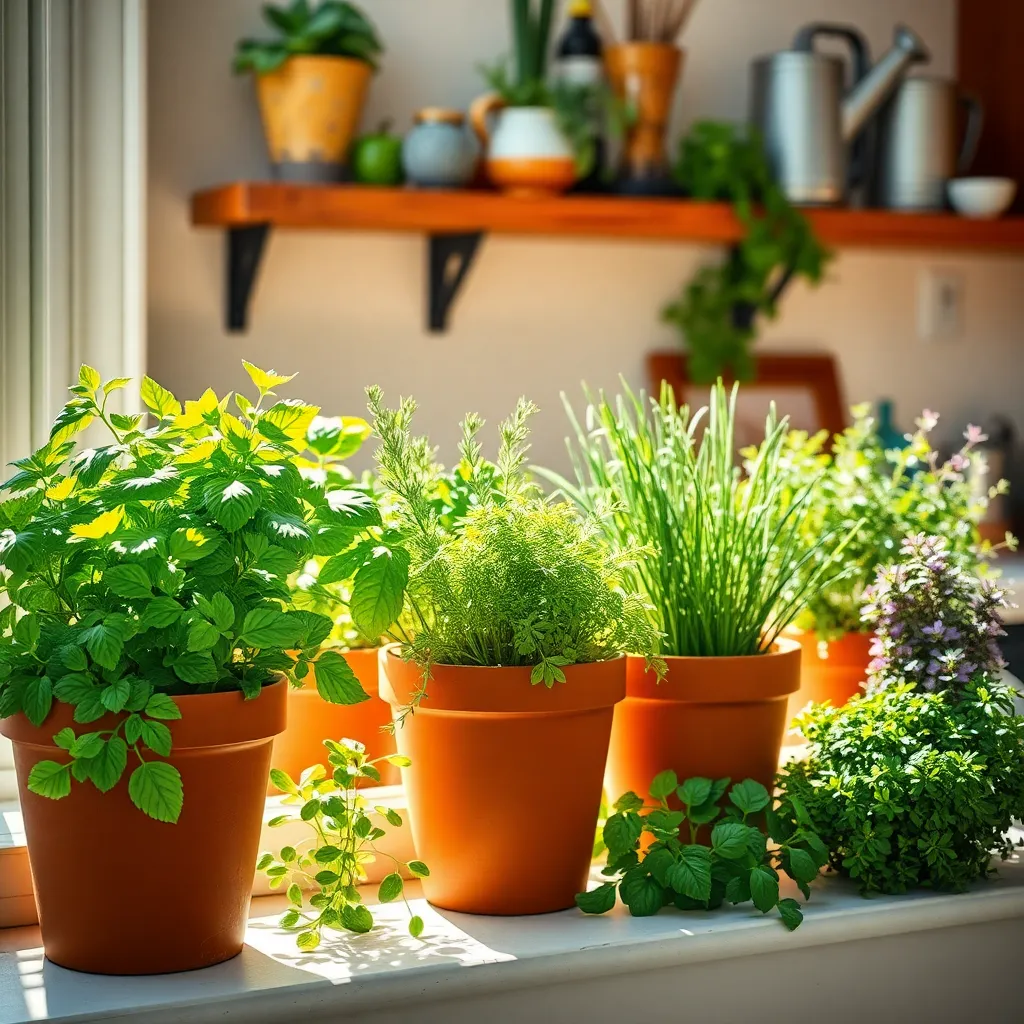
Choosing the right herb varieties for your kitchen garden is essential for success. Consider herbs that thrive in indoor environments, like basil, mint, and chives, which are great for beginners due to their adaptability and easy care.
Herbs require different conditions, so be sure to match your selection to your kitchen’s environment. For instance, rosemary and thyme prefer a sunny spot with well-draining soil, while parsley can tolerate more shade and likes consistently moist soil.
When selecting herbs, think about your cooking preferences and the flavors you use most often. This not only ensures you’ll use what you grow but also keeps you motivated to care for your plants, knowing they’re enhancing your meals.
Advanced gardeners may consider growing cilantro and dill, which can be a bit trickier indoors due to their light and temperature needs. These herbs benefit from supplemental lighting and a consistent temperature to mimic outdoor conditions.
To maximize growth, plant herbs in containers with good drainage and use a high-quality potting mix. Regularly monitor moisture levels and water when the top inch of soil feels dry, ensuring your herbs receive the right amount of hydration.
Prepare Indoor Planting Containers

When preparing indoor planting containers for your kitchen herb garden, it’s crucial to select pots with excellent drainage. Ensure each container has drainage holes to prevent water from pooling, which can lead to root rot and other issues.
Consider the size of the container carefully, as it should match the growth potential of your chosen herbs. Smaller herbs like chives and thyme can thrive in compact pots, while larger varieties such as basil and rosemary might require more space.
For optimal growth, fill your containers with a high-quality potting mix specifically designed for herbs. This type of soil mix is typically lightweight and well-draining, ensuring adequate aeration and moisture retention for healthy herb growth.
Adding a layer of gravel or small stones at the bottom of the container can further enhance drainage. This is particularly beneficial for herbs that prefer drier conditions, such as lavender and oregano, helping to prevent overwatering.
Plant Herbs with Adequate Spacing
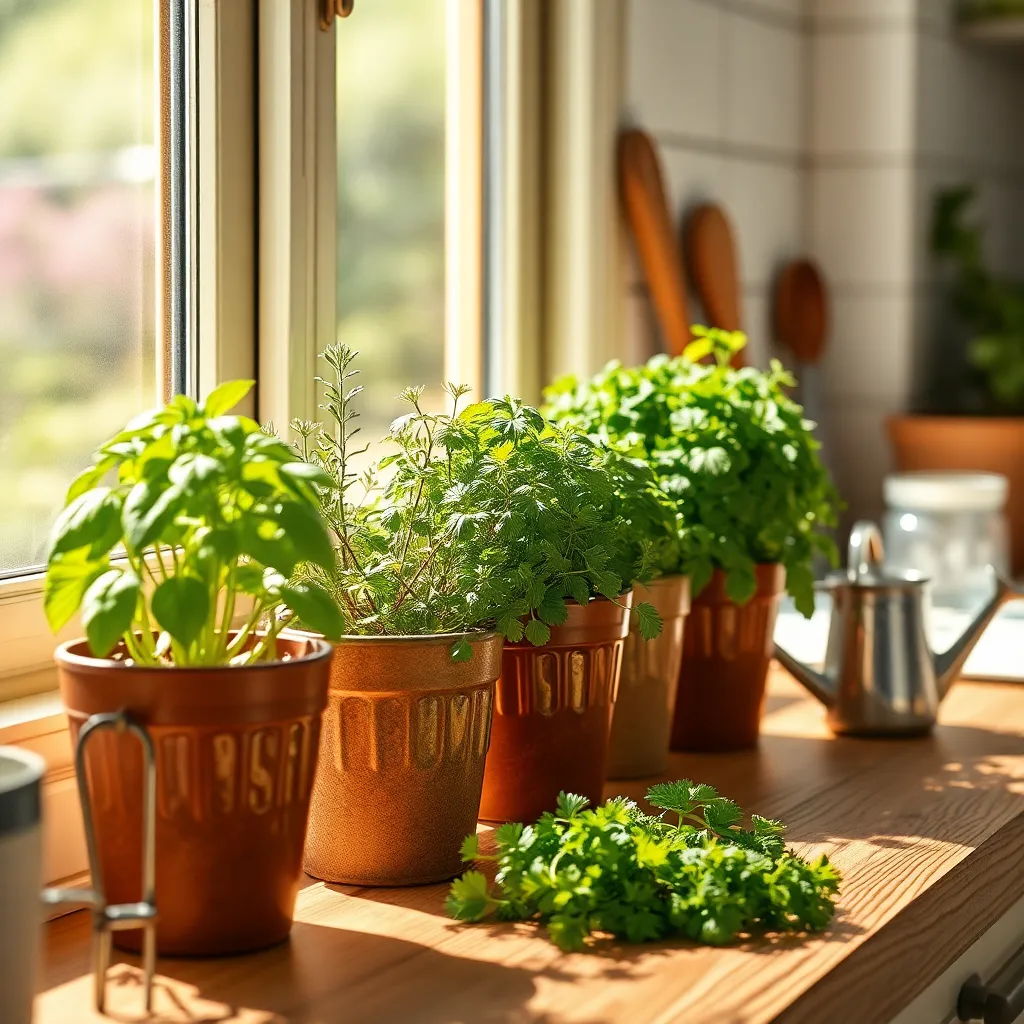
Proper spacing is crucial when planting herbs in your kitchen to ensure healthy growth and ease of care. Adequate spacing allows each herb to access sufficient sunlight, nutrients, and air circulation, which are essential for robust development.
Begin by understanding the space requirements of your chosen herbs; for example, basil needs more room than chives. A general rule is to space smaller herbs like thyme or parsley about 4 to 6 inches apart, while larger ones such as rosemary should be at least 12 inches apart.
Use a potting mix that drains well and is rich in organic matter to support healthy root development. Consider using a container that is wide rather than deep if you plan to grow several herbs together, as this will facilitate better spacing and growth.
For advanced gardeners, consider companion planting to maximize space and enhance growth. For instance, planting basil and oregano together can be beneficial as they thrive in similar conditions.
Provide Optimal Light and Water
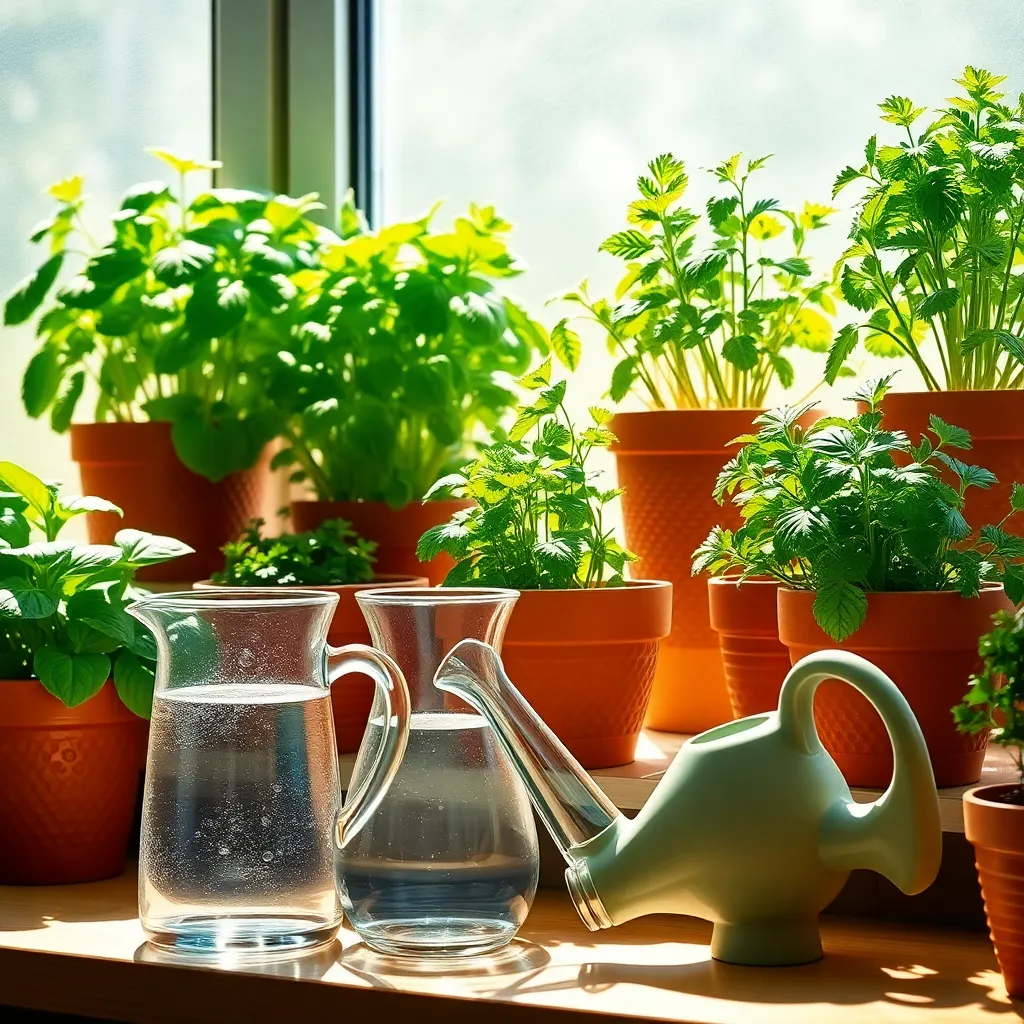
Ensuring your kitchen herb garden receives the right amount of light and water is crucial for healthy plant growth. Most herbs thrive in bright, indirect sunlight, making a sunny windowsill an ideal location. If natural light is limited, consider using grow lights to supplement, ensuring your herbs get about 6-8 hours of light daily.
Watering your herbs correctly is equally important, as both overwatering and underwatering can harm them. A general rule of thumb is to water when the top inch of soil feels dry to the touch, which helps prevent root rot by ensuring proper drainage. Consider using pots with drainage holes to avoid water accumulation, and place a saucer underneath to catch any excess water.
For beginners, a simple test to determine moisture levels is to use your finger to check the soil’s dryness. Meanwhile, experienced gardeners might opt for a moisture meter to gain more precise readings. Both methods allow you to tailor your watering schedule to the specific needs of each herb.
Advanced gardeners can experiment with different watering techniques, such as bottom watering, to encourage deeper root growth. This involves placing pots in a tray filled with water, allowing the soil to soak up moisture from the bottom. Regardless of your method, always remember that consistent watering is key to maintaining a lush and productive herb garden in your kitchen.
Harvest Herbs for Fresh Use
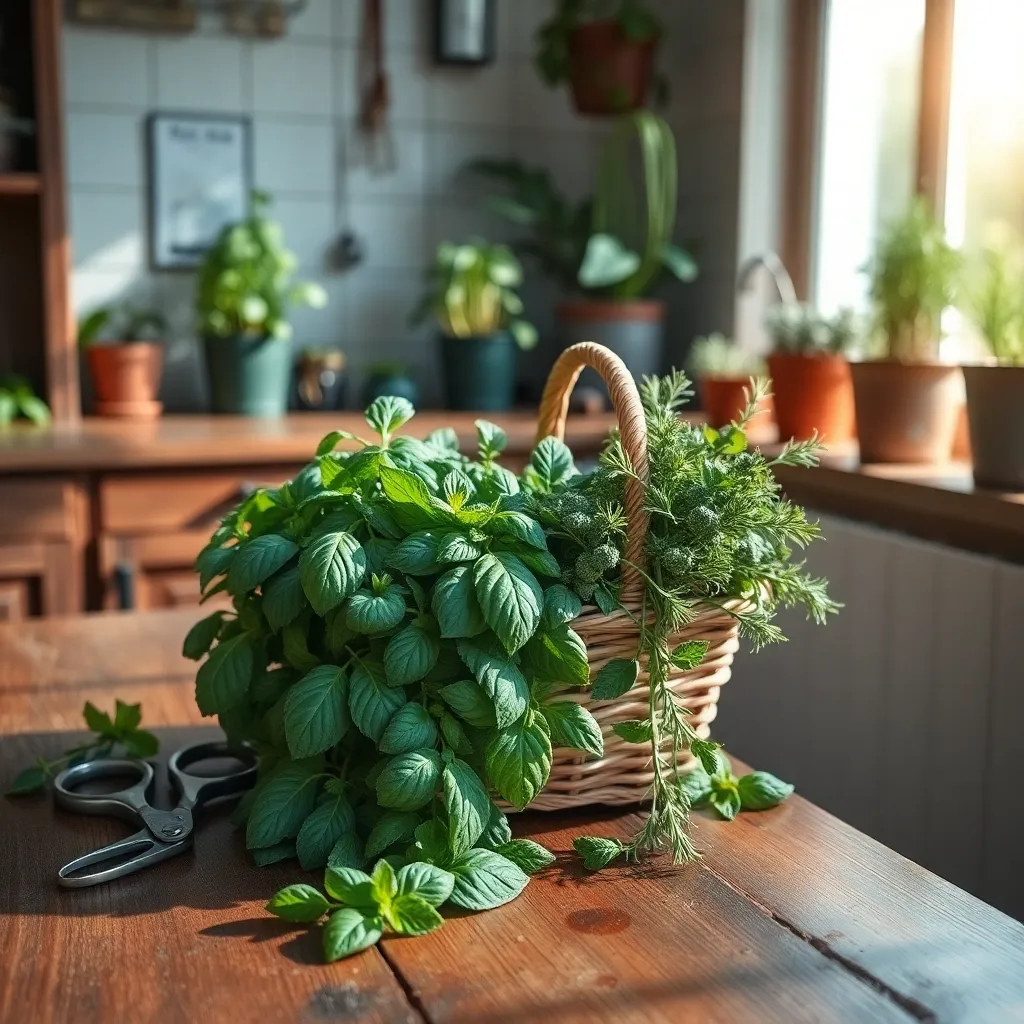
When your herbs are thriving, it’s time to start harvesting them for fresh use. Regular harvesting not only provides you with fresh flavors but also encourages the plants to grow bushier and more abundant.
For soft-stemmed herbs like basil, mint, and cilantro, pinch off the tips just above a pair of leaves. This method promotes branching and results in a fuller plant, ensuring a continuous supply of fresh leaves.
When dealing with woody herbs like rosemary and thyme, use clean, sharp scissors to snip sprigs from the top of the plant. Cutting these herbs back encourages new growth while preventing them from becoming too woody or leggy.
Remember to harvest in the morning after the dew has dried but before the day’s heat intensifies. This is when the essential oils are most concentrated, providing the best flavor and aroma.
For an advanced tip, consider succession planting if you have the space. This involves planting new seeds every few weeks to ensure a constant supply of young, tender herbs throughout the growing season.
- Ensure your scissors are clean to avoid transferring diseases between plants.
- Regularly remove dead or yellowing leaves to keep your plants healthy.
- After harvesting, rinse herbs in cool water and pat them dry with a clean towel.
Patience and consistent care will reward you with a bountiful herb garden that enhances your culinary creations. With these practical tips, your kitchen herb garden will be a thriving source of fresh flavors year-round.
Conclusion: Growing Success with These Plants
In exploring how to grow an herb garden in your kitchen, we’ve uncovered five essential relationship concepts: nurturing growth through consistent care, creating a shared space that fosters connection, the importance of patience and understanding in cultivating lasting bonds, celebrating small victories together, and the transformative power of teamwork in achieving a beautiful, shared goal. By integrating these gardening insights into your relationships, you can nurture deeper connections and cultivate loving environments.
As an actionable next step, choose one herb to start growing today and involve your partner in the process. This simple act can be the first step toward strengthening your connection through shared experiences and mutual support.
Remember, relationships, much like gardens, flourish with attention and care. Bookmark this article to revisit these insights as you continue to grow both your garden and your relationships. As you embark on this journey, envision a future where your relationships are as vibrant and thriving as your lush kitchen garden. Embrace this opportunity to nurture not just plants, but the bonds that enrich your life. Save this guide as your go-to resource for cultivating both your herb garden and your relationships, and watch both blossom beautifully over time.

